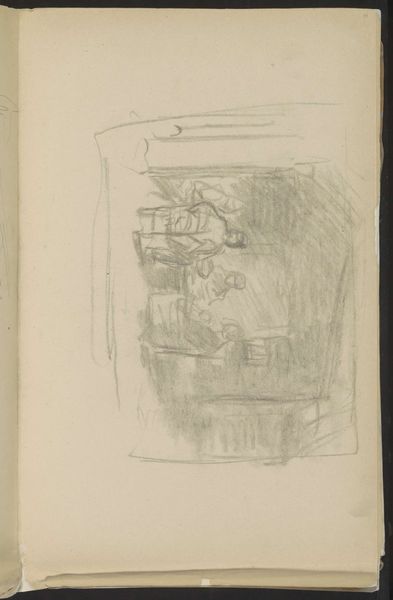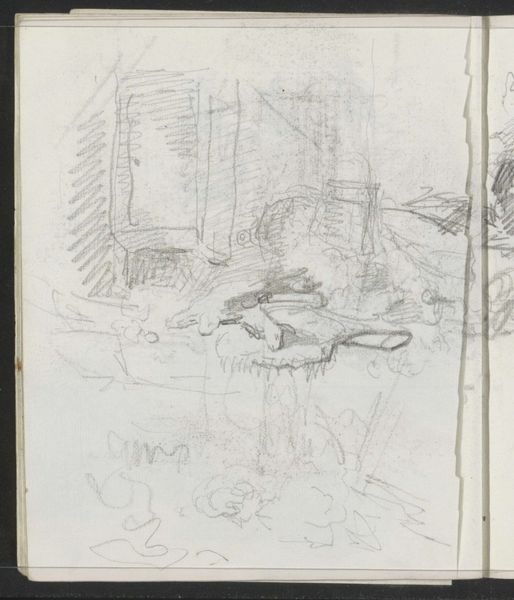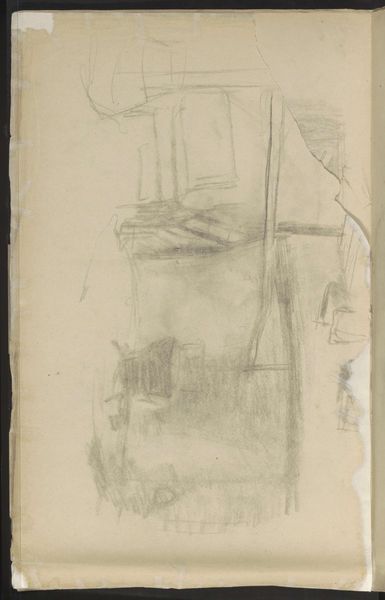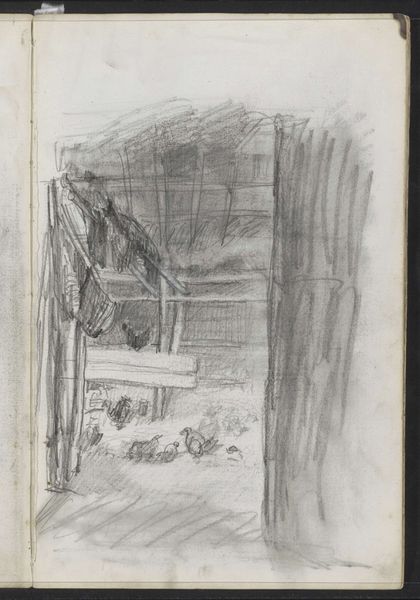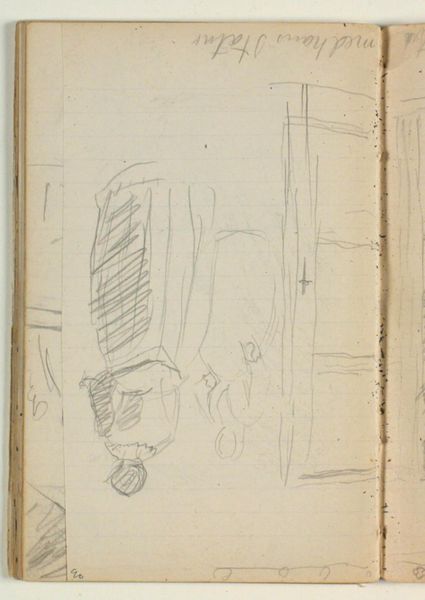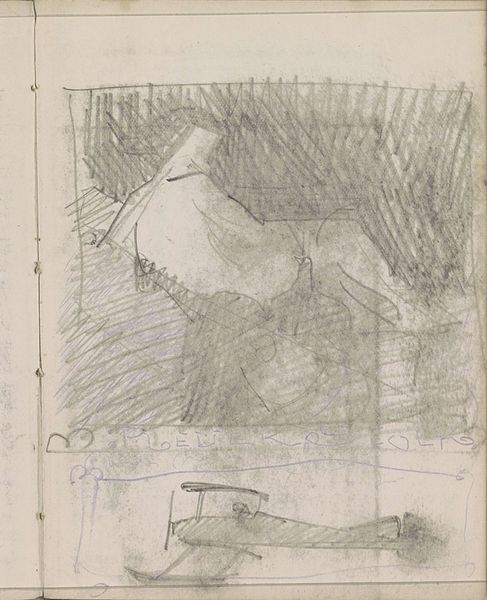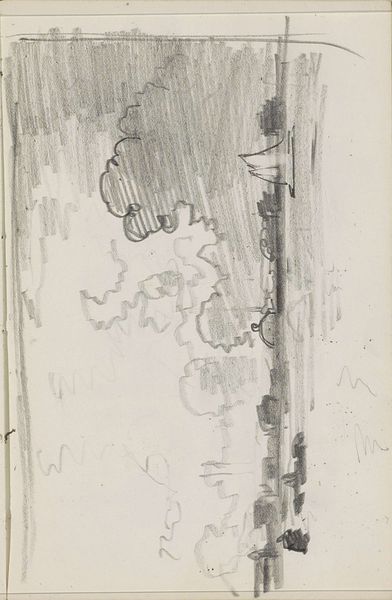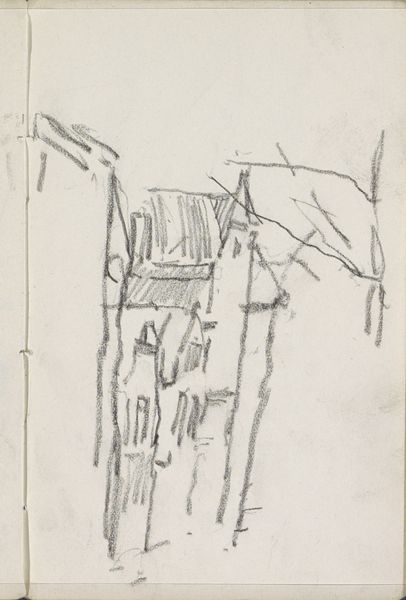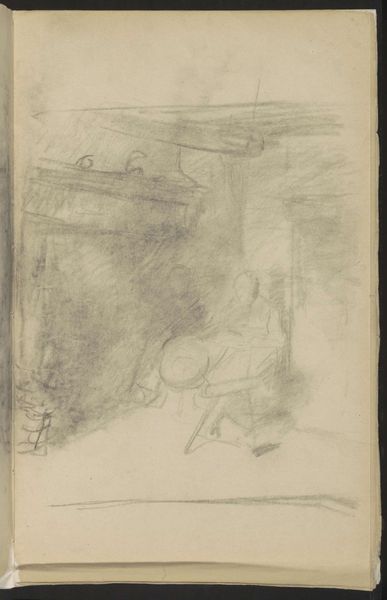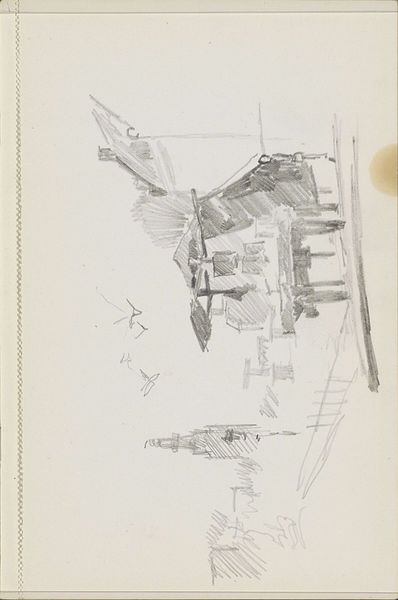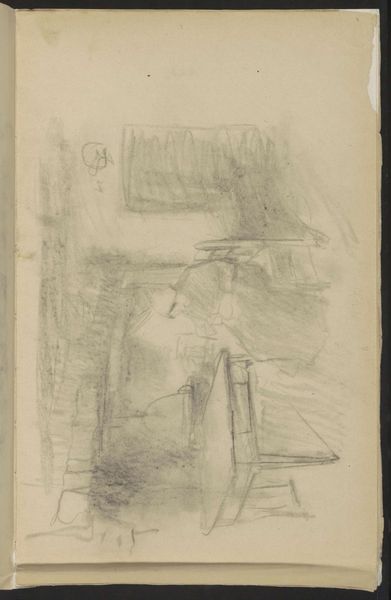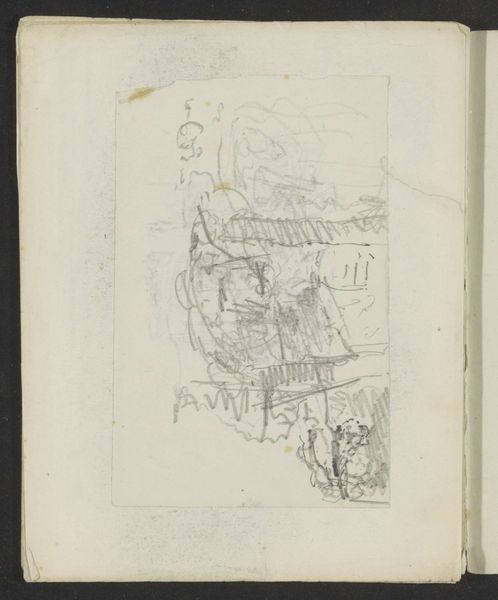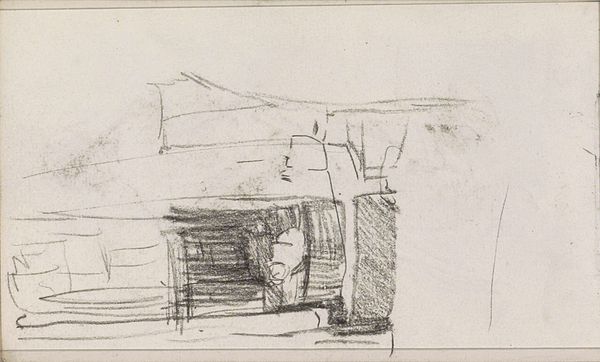
drawing, pencil
#
drawing
#
pen sketch
#
incomplete sketchy
#
hand drawn type
#
landscape
#
personal sketchbook
#
sketchwork
#
ink drawing experimentation
#
pen-ink sketch
#
pencil
#
sketchbook drawing
#
sketchbook art
#
initial sketch
Copyright: Rijks Museum: Open Domain
Editor: This is "Raam met rasterwerk," or "Window with Lattice" by Maria Vos, sketched sometime between 1834 and 1906. It's a pencil and ink drawing currently held at the Rijksmuseum. The initial impression I get is one of intimacy, like glimpsing a private moment from the artist's life. What strikes you about this sketch? Curator: What I find particularly fascinating is how this seemingly simple drawing offers a glimpse into 19th-century artistic practice. This intimate sketch allows us to consider the social and cultural position of women artists like Maria Vos at that time. How might her access to formal training, exhibition opportunities, and even subject matter, have differed from her male counterparts? Editor: That's an angle I hadn't considered. Were women artists generally relegated to more domestic subjects? Curator: Often, yes. While societal expectations placed women within the domestic sphere, their artistic production became a means to navigate and sometimes even challenge those boundaries. This window, an architectural element found in both public and private spaces, symbolizes these boundaries and opportunities. The 'incomplete sketchy' style, as some might call it today, reveals the preliminary stages of developing artistic skill, reflecting the ongoing effort to gain visibility and respect within artistic institutions of the era. Editor: So, it’s less about the window itself and more about what it represents in the context of Maria Vos's life as a woman artist at that time? Curator: Precisely. By examining her biography and the socio-political forces at play during her career, we can more fully understand this seemingly modest sketch. It reveals something significant about the role of women artists, exhibition accessibility, and representation politics of the period. Editor: This really shifts my understanding. I initially saw it as just a casual sketch, but it's clearly much more loaded with meaning. Curator: Exactly! Art always operates within specific social and historical frameworks. Appreciating the socio-political influences enriches the interpretation. Editor: I'll definitely look at art differently from now on. Thank you for illuminating this aspect.
Comments
No comments
Be the first to comment and join the conversation on the ultimate creative platform.
